Shopping for flooring and confused by the options? Both luxury vinyl plank flooring and laminate plank flooring offer two economical options for engineered flooring. Let’s compare and see if one is better than the other. The answers may surprise you.
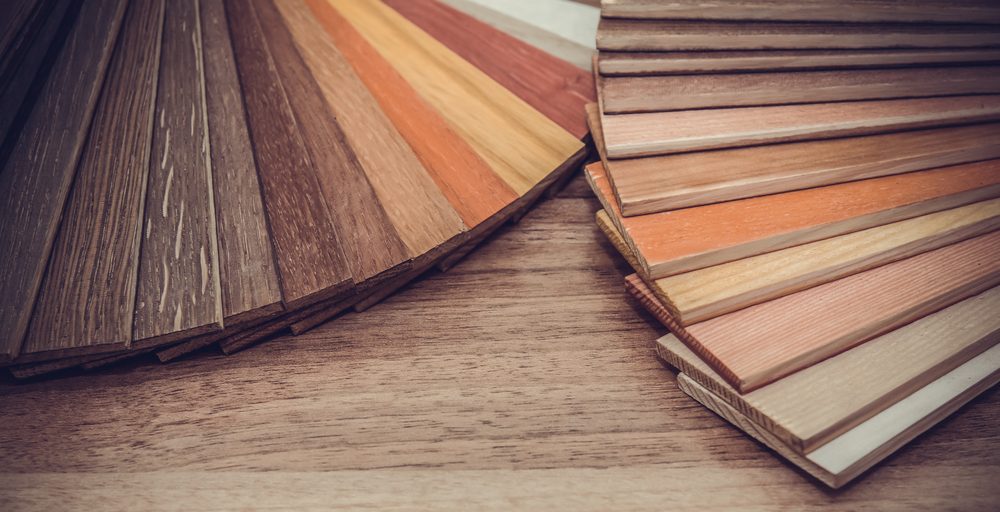
Comparing Luxury Vinyl Plank to Laminate Flooring – The Big Picture
In a head-to-head matchup, who would win the laminate vs vinyl flooring showdown? How does luxury plank vinyl compare to laminate flooring? They are both alternatives to solid wood, engineered wood, or tile/stone flooring. Before comparing the products, let’s start by defining what we mean by laminate flooring and vinyl flooring.
What is laminate flooring?
Planks of laminate flooring are like a basic flooring parfait. Think layers. There’s a base of particleboard, covered by a picture of wood grain, and topped off by a thin clear wear layer.
Technically, you could call laminate flooring “wood flooring” because the base is made of recycled chipped wood waste. But real wood floors are hard. Laminate flooring is not.
That particleboard base is a really soft material. Because it lacks strength and density, it doesn’t provide a ton of support (pun intended). That leaves the vinyl layer and the wear layer susceptible to scratching and denting, especially from heavy furniture or furniture on casters.
What is vinyl flooring?
Luxury vinyl plank (LVP) flooring is like a flooring parfait on steroids. Think lots of layers. And the core layer is where you find the biggest difference between laminate and vinyl. Instead of a soft, chipped wood or particleboard base, LVP has a base made of Stone Polymer Composite (SPC). This base is made from limestone, polyvinyl, and chemical stabilizers. SPC is dense and strong. So, bring on the heavy furniture! LVP gives better resistance to damage from denting and scratching.
And the other layers? Ambient stacks them high. Starting with an integrated underlayment on the bottom, then the SPC core next is the decorative vinyl layer, covered by the wear layer, and topped off by a layer of ultraviolet (UV) light protection.
Getting Down to the Details
Now that we know how vinyl and laminate differ in construction, let’s see how those differences translate to durability and appearance.
Durability
Remember all that talk about density? Well, that density converts to durability once the flooring is installed.
LVP flooring is great for use with pets, kids, and anything else that’s tough on floors. It won’t scratch as easily as laminate. And that density is important when installing floors too. Both types of floors are click-lock with a tongue and groove. But if you accidentally tap laminate flooring too hard, you can mar the edges during installation. Then the planks don’t fit well together. Now that’s a real problem. You either end up wasting planks or living with scuffed and dented edges.
Less density with laminate flooring means less durability. In addition, if the wear layer on the laminate isn’t treated for UV light protection, laminate flooring will fade in the sunlight.
The Winner: Luxury Vinyl Plank
LVP is clearly superior when it comes to durability.
Appearance
Laminate flooring includes a picture of real wood. It looks amazingly like wood because high-definition photography captures the wood grain as well as the color of the wood. The surface of laminate planks can be incredibly close in appearance to the real thing. Most manufacturers use several patterns, so you need to make sure to mix up the planks when racking the floor before installation. They look so much like wood, you need to rack them like wood!
Vinyl planks emulate wood in several ways. First, the planks fit together closely, just like a real hardwood floor. And, like laminate flooring, the vinyl is printed with a picture of real wood. The wear layer and UV protection layers also give the planks the look of finished wood. Unlike laminate planks, vinyl plank flooring is often textured. This gives the planks not only the look of wood but the texture of real wood as well. Like laminate, several pictures of wood are used, so you must rack the planks before installation for even distribution of each pattern.
The Winner: Luxury Vinyl Plank by a Nose
Both products emulate wood so closely it’s a toss-up. But the win goes to LVP because some products are textured, like real wood. Without texture, they are tied.
Where Can You Install Luxury Vinyl Plank and Laminate Plank Flooring?
When it comes to usage, LVP and laminate have many similarities but one huge difference.
Remember that particleboard or chipped wood core used to create laminate flooring? Well, that stuff swells when it gets wet. It can also mold and rot. You can’t put laminate flooring anyplace where it may get wet because it’s not completely waterproof.
But you can still put laminate in places that aren’t likely to get wet. For example, bedrooms, living rooms, dining rooms, and finished basements are all great candidates for laminate flooring. You can live life on the edge and install laminate in a half bathroom that only has a sink and toilet.
However, if you are thinking about one of those dog wash stations in the mudroom that are all the rage these days, don’t consider laminate flooring. Laminate isn’t for rooms with dog wash stations, showers, tubs, or appliances that use water. Skip laminate for the kitchen, full bathroom, and laundry room.
Luxury plank vinyl flooring doesn’t have any wood in it anywhere. Period. The limestone core doesn’t swell, rot or mold if it gets wet. That gives you a green light to install LVP anyplace where moisture is present or may accidentally occur. Because it is totally waterproof, you can put LVP in any room in the house. Want that dog wash? LVP loves your Labradoodle. Worried about the splashes from the sink? Stick with vinyl. Bedroom to basement, it’s the go-anywhere flooring for any room.
The Winner: LVP by a Mile
Feel free to install LVP products in any room in your house, above or below grade. It boldly goes where laminate can’t.
Installation Process: Laminate vs Vinyl
Both types of flooring are manufactured with a click-lock design. That means instead of gluing or nailing the planks to the subfloor, you attach the planks to each other. The connected planks create a solid surface that “floats” above the subfloor. That’s why both luxury vinyl planks and laminate planks are sometimes called floated floors.
Ease of installation
Both vinyl planks and laminate planks are fairly easy to install. They don’t require specialized tools (such as a nail gun), but the laminate flooring does require a circular saw to get clean cuts. Both flooring products can be installed successfully by a DIY’er that can follow the manufacturer’s directions.
The Winner: Dead heat
Both LVP and laminate are winners when you compare them to the skill level required to lay a tile or solid wood floor. DIY’ers love laminate and LVP for ease of installation.
Site preparation
Both laminate and LVP require a moisture barrier if the floor is going directly over concrete. Some brands include an integrated moisture barrier. If you are installing over concrete, it pays to read all the fine print and do a calcium chloride test to determine the amount of water vapor emitted by the concrete.
If the subfloor is in poor shape, laminate flooring will do a better job at hiding perfections. LVP installs over most hard-surface floor types provided the surface is clean, dry, and flat.
The Winner: Laminate planks
If the subfloor is in good condition, both LVP and laminate flooring requires little site preparation. But if the subfloor is in bad shape, the laminate is the clear winner, as it is much more forgiving of imperfections.
Installation over heated floors
Radiant floor heating is increasingly popular in bathrooms and bedrooms to create cozy spaces with extra warmth. Since you shouldn’t put laminate flooring in a full bathroom or kitchen, you’ll really only deal with this question when installing flooring in bedrooms or living areas.
Luxury vinyl planks can be installed over heated floors. Make sure the radiant heat system has been running for at least 2 weeks before you install it. Not all laminate flooring can be installed over heated floors. Make sure you confirm before purchasing.
The Winner: Luxury vinyl plank flooring
Feel free to install LVP over any type of heated floor.
Need for acclimation
Because laminate flooring includes wood products, it should be acclimated before installation. However, it doesn’t require the long acclimation period of solid hardwood flooring. If you acclimate between 24 and 72 hours, you will be fine.
Luxury vinyl plank flooring doesn’t require acclimation under normal circumstances. As long as the flooring doesn’t get colder than 40° or hotter than 95° for more than an hour, the planks do not need to be acclimated. Let’s face it – those are pretty rare conditions except for the dead cold of winter or the blazing heat of summer. If subjected to those extreme conditions, you’ll need to acclimate the flooring for 12 hours.
The Winner: Luxury vinyl plank
Except in rare circumstances, LVP flooring doesn’t require acclimation. That means you can install faster and start enjoying your new floors sooner.
Ease of Maintenance
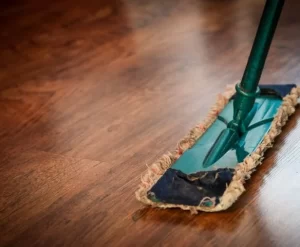
Laminate flooring shouldn’t be wet mopped. Water can seep in between the layers causing the planks to swell and moisture contributes to delamination. Once the top layer of laminate becomes loose, you cannot repair the plank. It must be replaced.
Vinyl plank flooring can be wet mopped. Neither laminate nor LVP should ever be steam mopped. No matter what the steam mop manufacturer claims, steam can damage both types of flooring. Save that steamer for cleaning your ceramic or porcelain tiles.
The Winner: LVP by a nose
This one is really close. Both flooring products offer easy-care and both are stain-resistant. LVP gets a slight advantage because it offers more care options.
Ease of Repair
Both LVP and laminate flooring products are floated. Because they aren’t attached to the subfloor, they are easier to repair. If a laminate plank delaminates or a vinyl plank scratches, the damaged plank can be removed and replaced. That’s why it’s a good idea to always order a little more flooring than you need. When repair time comes, you’ll be glad you have those extra planks on hand.
The Winner: Tied
Repairs, if needed are much easier than repairing a solid wood floor.
Comparing the Cost of Laminate vs Vinyl
Cost is always a major factor in any home improvement project. If the product doesn’t meet the budget, why even consider it?
Luckily, both laminate and LVP provide a budget-friendly alternative to solid hardwood flooring. You get the warm, natural look of wood without the high cost of the wood planks and installation.
LVP flooring is more expensive than laminate flooring. The materials used to create the flooring and the manufacturing process are more costly, and those costs are passed on to the consumer. There are budget-friendly LVP options, just make sure you don’t give up quality manufacturing to get a cheaper product.
Also, consider if an additional underlayment is required. The cost of laminate flooring with an additional underlayment may come out equal to the cost of LVP with an integrated underlayment.
The Winner: Laminate flooring
Laminate flooring is the clear winner when you compare based on cost alone.
Sustainability of Laminate vs Vinyl
If the eco-friendly characteristics of products are important to you, it’s important to compare the sustainability of laminate products to LVP products.
On the surface, laminate appears to have the edge. The wood product layer of laminate flooring consists of recycled wood products. That’s eco-friendly, it keeps these manufacturing by-products out of landfills. But laminate floors are topped with a layer of plastic material. If they contain high levels of volatile organic compounds (VOCs) your flooring may have a negative impact on the air quality in your home.
On the other hand, limestone is the only natural product used to make SPC luxury vinyl plank flooring. Those synthetic materials may also emit VOCs. Ask about CARB 2 compliance and FloorScore Certifications. LVP wins the durability test, so it lasts longer. This comparison is close!
The Winner: Laminate flooring
Provided you pick a laminate flooring with low VOCs, the upcycling of wood product waste into the manufacturing process makes laminate the winner.
Overall – Which is Better – LVP or Laminate
In most cases, LVP will be the winner if you compare LVP to laminate. It is more durable, can be installed in more places, requires no acclimation, and can be cleaned using more methods.
The added versatility of LVP makes it worth the additional cost when compared to laminate.
But like with any product you buy, be sure to shop carefully and compare extensively. For example, not all LVP flooring features an SPC core. Some laminates and LVPs offer ultraviolet resistance while others do not.
Consider where the flooring will be installed and the traffic it will receive.

About the Author
Cheryl is our go-to guru for all things sustainable living. She’s on a mission to make your family and our planet thrive! With a heart as big as her passion for sustainability, Cheryl brings you the freshest insights on eco-friendly building products and energy efficiency. 🌱💡
And hey, did you hear about the eco-friendly lightbulb that went to therapy? It finally found its inner “enlightenment”! 😄 Join Cheryl on this green journey, where she’ll tackle your concerns with a smile and a sprinkle of eco-humor!

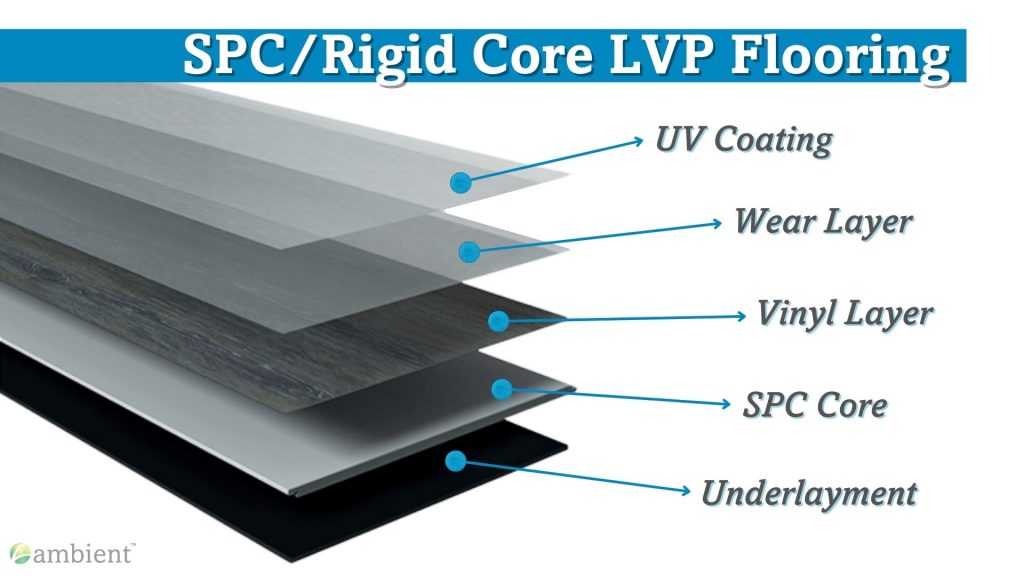
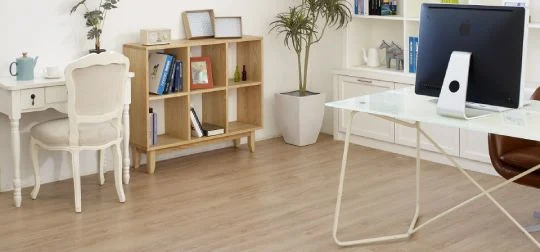
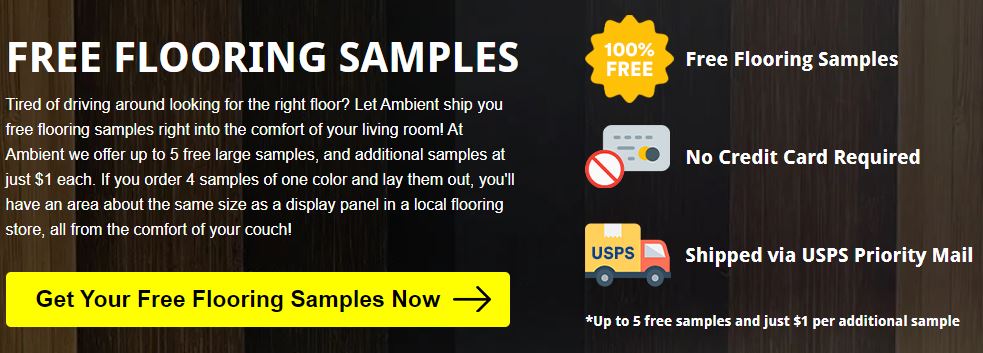
do you have a show room? If so where is it located?
Thank you for your interest in our products! We do have a showroom in Jessup, MD, but we also ship out free samples of our flooring products for you to view in the comfort of your own home. If you have further questions please don’t hesitate to reach out to our customer response team at (866) 710-7070!